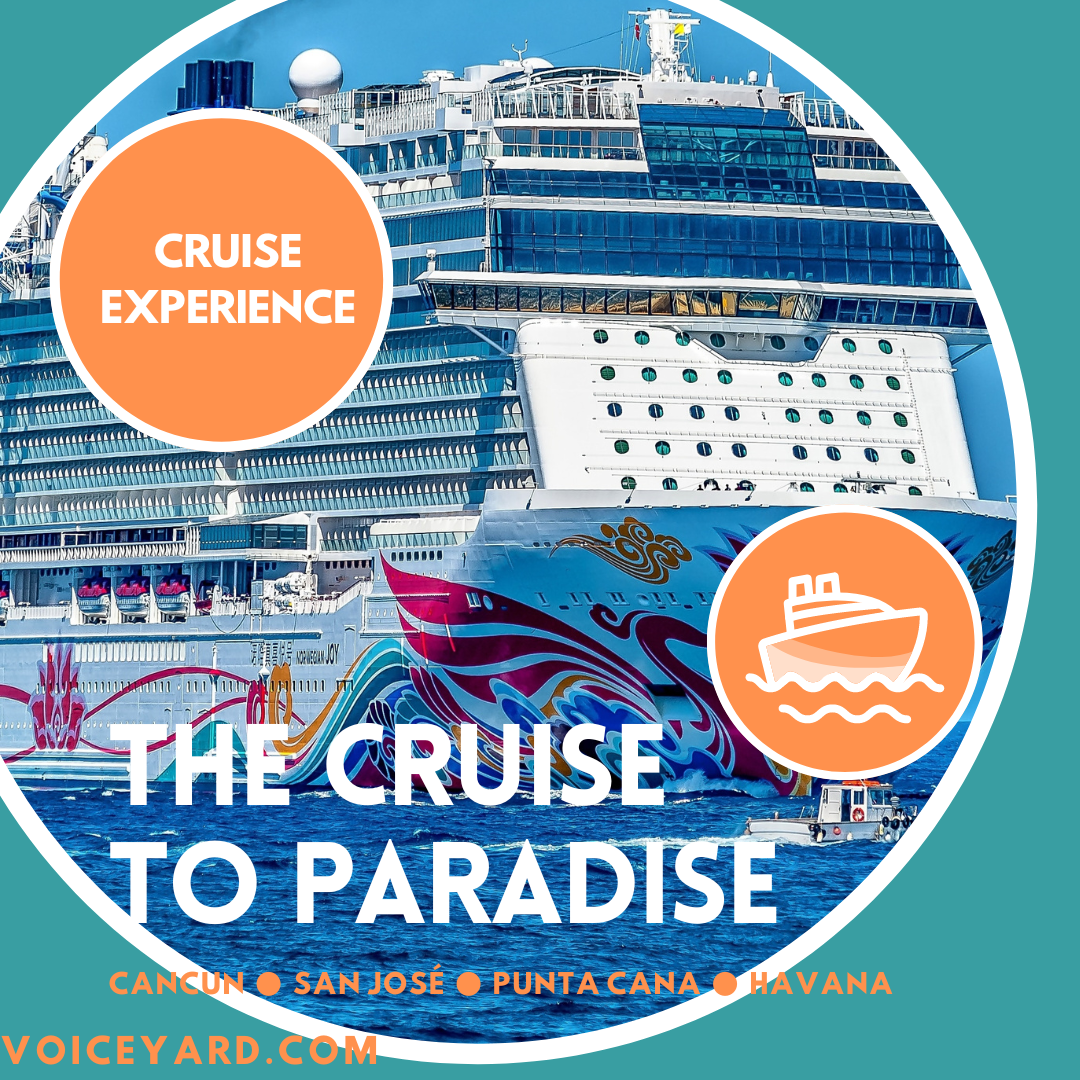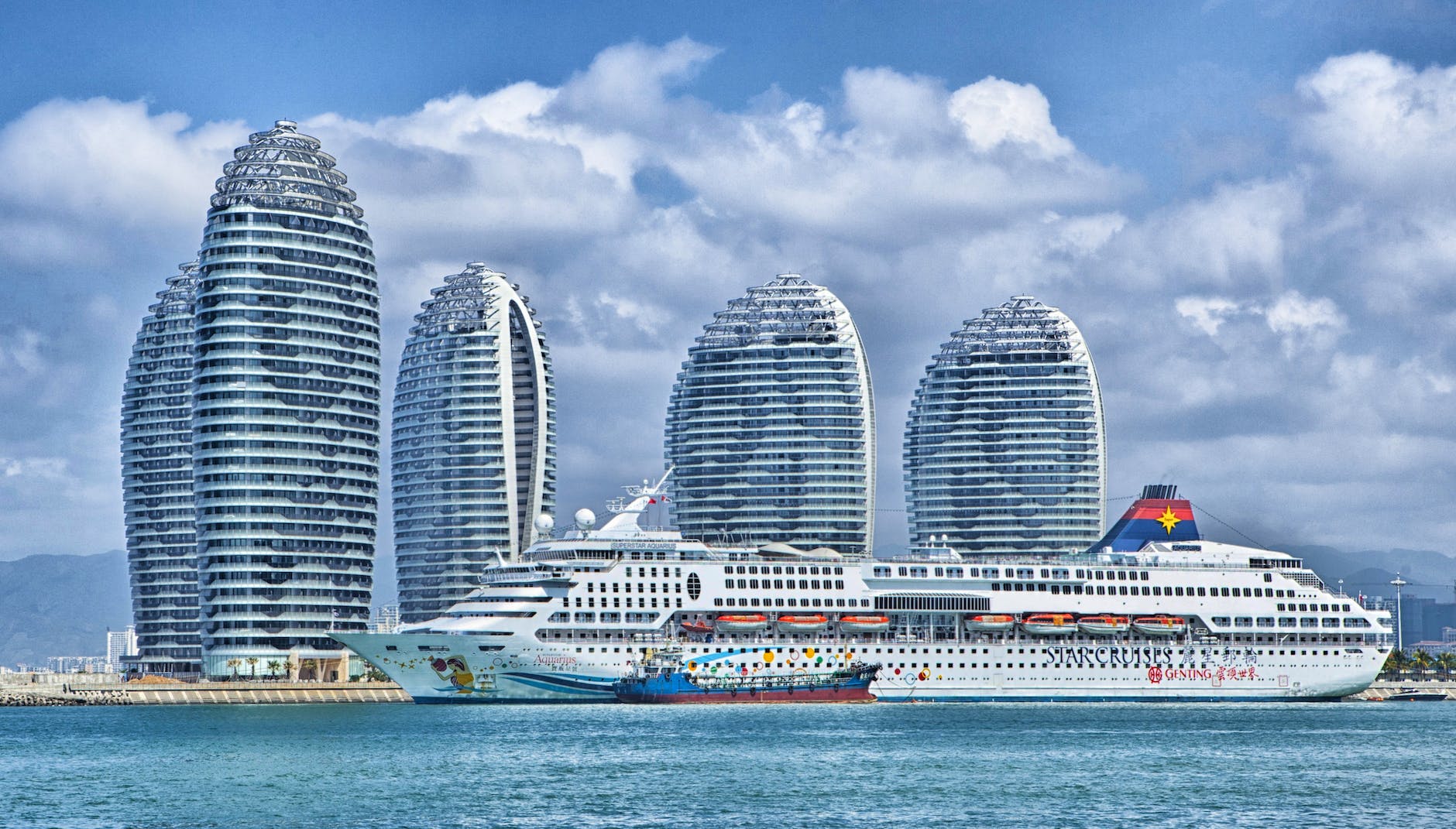Cruise Ship Travel: Sailing the Seas A Comprehensive Guide
***freeDIGIBOOK***Where to Store Your Passport While Traveling
Chapter 1: Introduction to Cruise Ship Travel
What is a cruise ship?
History of cruise ship travel
Types of cruise ships
Cruise ships are large passenger vessels designed to provide luxurious and comfortable travel experiences at sea. They typically offer a range of amenities and facilities, such as restaurants, bars, casinos, theaters, swimming pools, and spas, among others.
The history of cruise ship travel dates back to the early 19th century when steam-powered ships were first introduced. These vessels were primarily used for transporting cargo, but they also began to offer leisure voyages to passengers. In 1844, the first passenger steamship, the SS Great Britain, was launched, which marked the beginning of the modern cruise industry.
However, it wasn’t until the early 20th century that cruising became a popular form of vacation travel. In 1900, the Hamburg-American Line introduced the first cruise ship designed exclusively for pleasure travel, the Prinzessin Victoria Luise.
Today, there are many different types of cruise ships available to travelers. Some cater to families with children, while others cater to adults only. There are also expedition cruise ships that offer adventure travel to remote locations, and river cruise ships that sail on inland waterways. The size and capacity of cruise ships vary as well, with some accommodating a few hundred passengers and others capable of carrying thousands.
Chapter 2: Planning Your Cruise
Choosing the right cruise for you
Booking your cruise
What to pack
Planning a cruise can be an exciting and enjoyable experience, but it can also be overwhelming with so many options available. Here are some tips to help you plan your next cruise.
Choosing the right cruise for you:
Consider your budget: Cruise prices can vary greatly, so it’s important to set a budget and stick to it.
Decide on a destination: Think about the type of vacation you want and what destinations interest you. Do you want to visit multiple countries or stay in one region?
Choose a cruise line: Different cruise lines cater to different demographics and interests, so do your research to find the one that best fits your preferences.
Research the ship: Look at the ship’s amenities, cabin options, and overall size to ensure it meets your needs and expectations.
Read reviews: Check online reviews from previous passengers to get an idea of what to expect and learn from their experiences.
Booking your cruise:
Book early: The earlier you book, the better chance you have of securing your preferred cabin and itinerary.
Consider a travel agent: A travel agent can help you find the best deals and ensure you’re getting the most value for your money.
Pay attention to promotions: Cruise lines often offer promotions and discounts, so keep an eye out for those to save money.
Understand the cancellation policy: Make sure you understand the cancellation policy before you book, in case you need to cancel or change your plans.
What to pack:
Clothing: Check the cruise line’s dress code and pack accordingly. You’ll also want to bring comfortable clothing for excursions and casual activities.
Toiletries: Bring essentials like toothpaste, shampoo, and sunscreen. Many cruise ships also provide basic toiletries in the cabin.
Electronics: Don’t forget your camera, charger, and any other electronics you’ll need.
Documents: Bring your passport, ID, and any other necessary travel documents.
Medications: Pack any prescription medications and over-the-counter remedies you may need.
Other items: Consider bringing a reusable water bottle, travel pillow, and small backpack for excursions.
Chapter 3: Life on Board
Accommodations
Dining options
Entertainment and activities
Once you board a cruise ship, you’ll have a variety of amenities and activities to enjoy during your journey. Here are some key aspects of life on board a cruise ship.
Accommodations:
Cabin types: Cruise ships offer a variety of cabin types, from interior to balcony to suites. Consider your budget and preferences when choosing your cabin.
Amenities: Cabins can come equipped with a range of amenities, such as flat-screen TVs, mini-fridges, and private balconies. Some higher-end suites may even have butler service or private hot tubs.
Location: Think about where you want your cabin to be located on the ship. Some passengers prefer cabins near the action, while others prefer quieter areas.
Dining options:
Main dining room: Most cruise ships have a main dining room with assigned seating and a rotating menu. It’s included in your cruise fare.
Specialty restaurants: Many cruise ships also offer specialty restaurants, which may come with an additional fee. These restaurants often have unique menus and a more intimate atmosphere.
Buffets: Cruise ships usually have a buffet-style restaurant that’s open for breakfast, lunch, and dinner. It’s included in your cruise fare and is a great option for casual dining.
Entertainment and activities:
Shows: Cruise ships often have nightly shows, such as musicals, comedies, and acrobatic performances. Some may require reservations, so be sure to check the schedule.
Activities: There’s never a shortage of activities on a cruise ship. You can participate in fitness classes, trivia games, arts and crafts, and more.
Nightlife: Cruise ships have bars, lounges, and nightclubs where you can enjoy live music, dancing, and drinks.
Excursions: When the ship stops in port, you can book shore excursions to explore the local area. These can include anything from city tours to zip-lining adventures.
Chapter 4: Ports of Call
Excursions and activities in port
Popular cruise destinations
Cultural immersion opportunities
One of the most exciting parts of a cruise is getting to explore different ports of call. Here are some things to consider when planning your port activities.
Excursions and activities in port:
Book in advance: Popular excursions can sell out quickly, so book in advance to ensure you get the activities you want.
Consider your interests: Think about what you want to do in port. Do you want to explore the local culture, relax on the beach, or participate in adventurous activities?
Time constraints: Make sure you have enough time to enjoy your activity and return to the ship before it departs.
Budget: Excursions can be expensive, so factor in the cost when planning your port activities.
Popular cruise destinations:
Caribbean: The Caribbean is a popular destination for cruises, with stops in destinations such as Jamaica, the Bahamas, and the Dominican Republic.
Mediterranean: The Mediterranean offers a wealth of cultural experiences, with stops in cities like Barcelona, Rome, and Athens.
Alaska: Cruises to Alaska provide opportunities to see glaciers, wildlife, and natural beauty.
Asia: Asia offers a diverse range of cultural experiences, from the bustling streets of Tokyo to the serene temples of Thailand.
Cultural immersion opportunities:
Food: One of the best ways to experience local culture is through food. Try the local cuisine and visit local markets or restaurants.
Historical sites: Many ports have historical sites or museums that offer insights into the local culture and history.
Arts and crafts: Local art galleries or markets can provide opportunities to purchase unique souvenirs and interact with local artists.
Language: Try learning a few basic phrases in the local language to help you connect with the locals and show respect for their culture.
Chapter 5: Safety and Security
Emergency procedures
Staying healthy on board
Tips for staying safe in port.
While cruise ships are generally safe environments, it’s important to be aware of potential risks and take necessary precautions to ensure your safety and well-being.
Emergency procedures:
Attend the muster drill: At the beginning of each cruise, there will be a mandatory safety drill. Pay attention and take the instructions seriously.
Know your evacuation route: Familiarize yourself with the location of your cabin’s emergency exits and the ship’s evacuation procedures.
Know your muster station: In the event of an emergency, you’ll need to report to your designated muster station.
Pack a travel first aid kit: Include basic medications, bandages, and other essentials to handle minor injuries or illnesses.
Staying healthy on board:
Wash your hands regularly: Use soap and water or hand sanitizer to prevent the spread of germs.
Stay hydrated: Drink plenty of water to avoid dehydration.
Avoid overindulging: Cruise ships offer plenty of food and drink options, but it’s important to maintain a healthy balance.
Use caution in hot tubs and pools: Follow posted guidelines for use and be aware of potential hazards.
Tips for staying safe in port:
Be aware of your surroundings: Pay attention to your surroundings and be aware of potential risks.
Don’t carry valuables: Leave valuable items in your cabin safe and only carry what you need for the day.
Book excursions through the cruise line: The cruise line will have vetted the excursion providers and ensure they meet safety standards.
Be mindful of local laws and customs: Research local laws and customs before visiting a port, and be respectful of cultural norms.
Chapter 6: Cruise Ship Etiquette
Dos and don’ts on board
Tipping policies
Dress codes
Cruise ships have their own unique etiquette, and it’s important to be aware of these customs to ensure a pleasant experience for all passengers.
Dos and don’ts on board:
Do be respectful: Be mindful of other passengers and their needs.
Do be on time: Don’t be late for scheduled activities or dining reservations.
Don’t be loud: Keep noise levels to a reasonable level in public areas and in your cabin.
Don’t reserve deck chairs: Avoid reserving deck chairs by leaving personal belongings on them for extended periods of time.
Tipping policies:
Check the cruise line’s tipping policy: Some cruise lines automatically add gratuities to your account, while others allow you to tip individually.
Tip for exceptional service: If you receive exceptional service from a crew member, consider tipping them extra.
Budget for tipping: Factor in the cost of tips when planning your cruise budget.
Dress codes:
Check the cruise line’s dress code: Some cruise lines have formal nights or specific dress codes for certain areas of the ship.
Pack accordingly: Make sure you have appropriate attire for the dress code, and bring comfortable clothing for casual activities.
Respect the dress code: Follow the dress code to avoid being turned away from certain areas of the ship.
Chapter 7: Making the Most of Your Cruise
Maximizing your time on board
Meeting new people
Relaxing and unplugging
Cruise ships offer a variety of amenities and activities, and it’s important to make the most of your time on board to fully enjoy the experience.
Maximizing your time on board:
Plan your activities: Take advantage of the ship’s daily activity schedule and plan out your day to maximize your time on board.
Try new things: Don’t be afraid to try new activities and experiences offered on the ship.
Take advantage of ship amenities: Make use of the ship’s amenities, such as the pool, gym, and spa.
Enjoy the views: Take in the breathtaking views from various locations around the ship.
Meeting new people:
Attend ship events: Participate in ship events and activities to meet new people who share similar interests.
Join groups: Many cruise lines offer social groups, such as singles or LGBT groups, for passengers to connect with others.
Sit at shared tables: When dining in the main dining room, opt for shared tables to meet new people.
Relaxing and unplugging:
Disconnect from technology: Consider unplugging from technology and enjoying the ship’s amenities and entertainment options.
Find a quiet spot: Seek out quiet areas of the ship, such as the library or a secluded deck, to relax and unwind.
Take advantage of the spa: Book a massage or other spa treatments to relax and rejuvenate.
Chapter 8: Special Considerations
Traveling with children
Cruising as a solo traveler
Accessibility on board
Cruise ships are designed to accommodate a wide variety of travelers, including families with children, solo travelers, and those with accessibility needs. Here are some things to consider when planning a cruise with special considerations.
Traveling with children:
Choose a family-friendly cruise line: Look for a cruise line that offers amenities and activities for children, such as kids’ clubs and family-friendly excursions.
Check the age requirements: Some cruise lines have age restrictions for certain activities and facilities, so make sure your children meet the age requirements.
Bring necessary items: Pack plenty of snacks, toys, and other items to keep your children entertained during the cruise.
Cruising as a solo traveler:
Choose a cruise line that caters to solo travelers: Some cruise lines offer single cabins and social events for solo travelers.
Participate in ship activities: Join in ship activities and events to meet new people and make friends.
Book shore excursions: Book shore excursions to explore new destinations with a group of fellow passengers.
Accessibility on board:
Choose an accessible cabin: Many cruise ships offer accessible cabins with features like wider doors and roll-in showers.
Check accessibility in port: Research the accessibility of the ports of call and book shore excursions that are accessible.
Inform the cruise line of your needs: Let the cruise line know about your accessibility needs before your cruise to ensure they can accommodate you.
Chapter 9: Sustainability and Responsible Tourism
Environmental impact of cruise ships
Ethical tourism practices
Supporting local economies
As travelers, it’s important to be mindful of the impact we have on the environment and local communities. Here are some considerations for sustainable and responsible tourism on a cruise.
Environmental impact of cruise ships:
Waste management: Cruise ships generate a significant amount of waste, so it’s important to dispose of it properly and recycle when possible.
Energy use: Cruise ships require a lot of energy, so consider ways to conserve energy, such as turning off lights and air conditioning when not in use.
Water conservation: Water is a precious resource, so use it responsibly and avoid wasting it.
Ethical tourism practices:
Respect local cultures: Research the local customs and culture before visiting a port and respect them.
Avoid exploitative activities: Avoid activities that exploit animals or people, such as elephant rides or visits to orphanages.
Support ethical businesses: Support businesses that prioritize sustainability and ethical practices.
Supporting local economies:
Shop local: Purchase souvenirs and goods from local businesses rather than chain stores.
Eat local: Dine at local restaurants and sample the local cuisine.
Book local tours: Book tours and excursions with local tour operators to support the local economy.
Chapter 10: The Future of Cruise Ship Travel
Emerging trends in the industry
Innovations in ship design and technology
Predictions for the future of cruise ship travel
Epilogue: Reflections on Your Cruise Experience
The cruise ship industry is constantly evolving, and there are many emerging trends and innovations that will shape the future of cruise ship travel.
Emerging trends in the industry:
Destination immersion: Cruise lines are offering longer stays in ports of call and more opportunities for cultural immersion.
Environmental sustainability: Cruise lines are implementing more sustainable practices to reduce their environmental impact.
Health and wellness: Cruise lines are focusing more on health and wellness offerings, such as fitness classes and healthy dining options.
Innovations in ship design and technology:
New ship designs: Cruise lines are designing new ships with features such as more balconies and indoor/outdoor spaces.
Advanced technology: Cruise ships are implementing advanced technology, such as facial recognition and virtual reality, to enhance the passenger experience.
Eco-friendly technology: Cruise ships are using innovative technologies, such as LNG-powered engines, to reduce their environmental impact.
Predictions for the future of cruise ship travel:
Continued growth: The cruise industry is expected to continue to grow, with more passengers and new destinations.
Personalization: Cruise lines will offer more personalized experiences tailored to individual passenger preferences.
Innovation: Cruise ships will continue to evolve with new technology and amenities to keep up with changing passenger expectations.
Epilogue: Reflections on Your Cruise Experience:
As you reflect on your cruise experience, consider the memories you made, the new people you met, and the sights and experiences you had. Remember to be mindful of the impact you have on the environment and local communities and continue to explore new with an open mind and a spirit of adventure.




